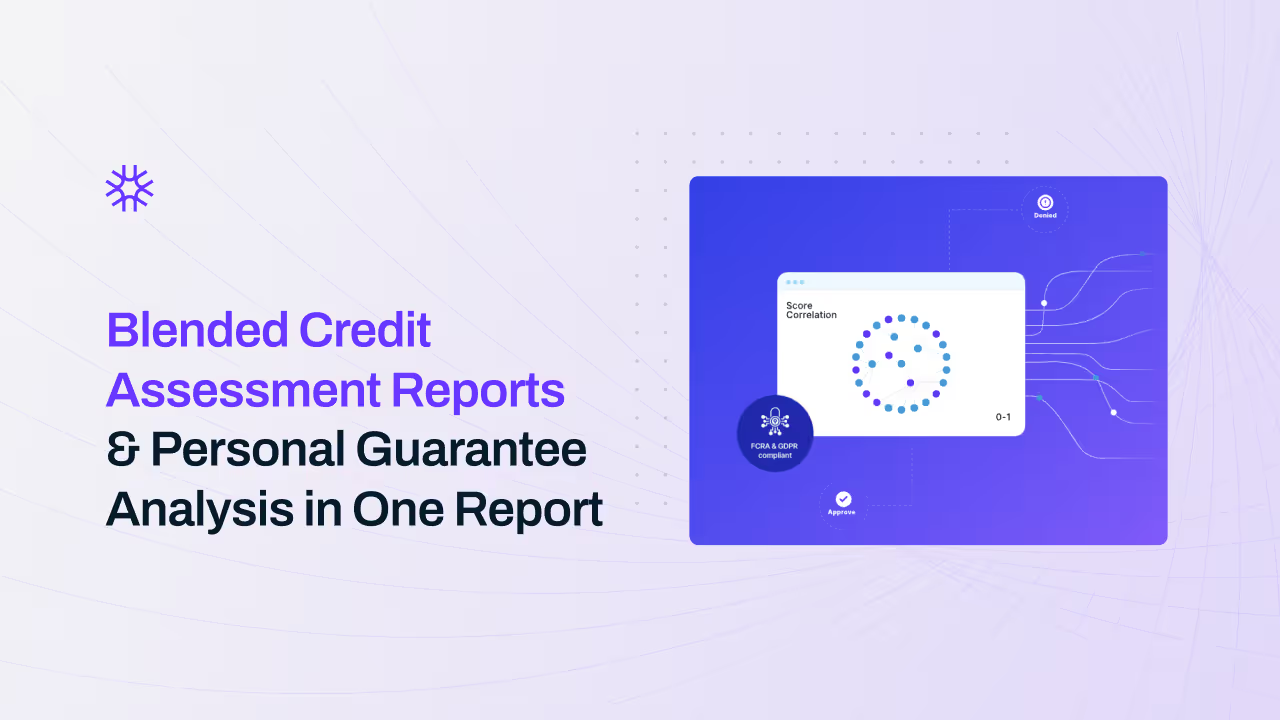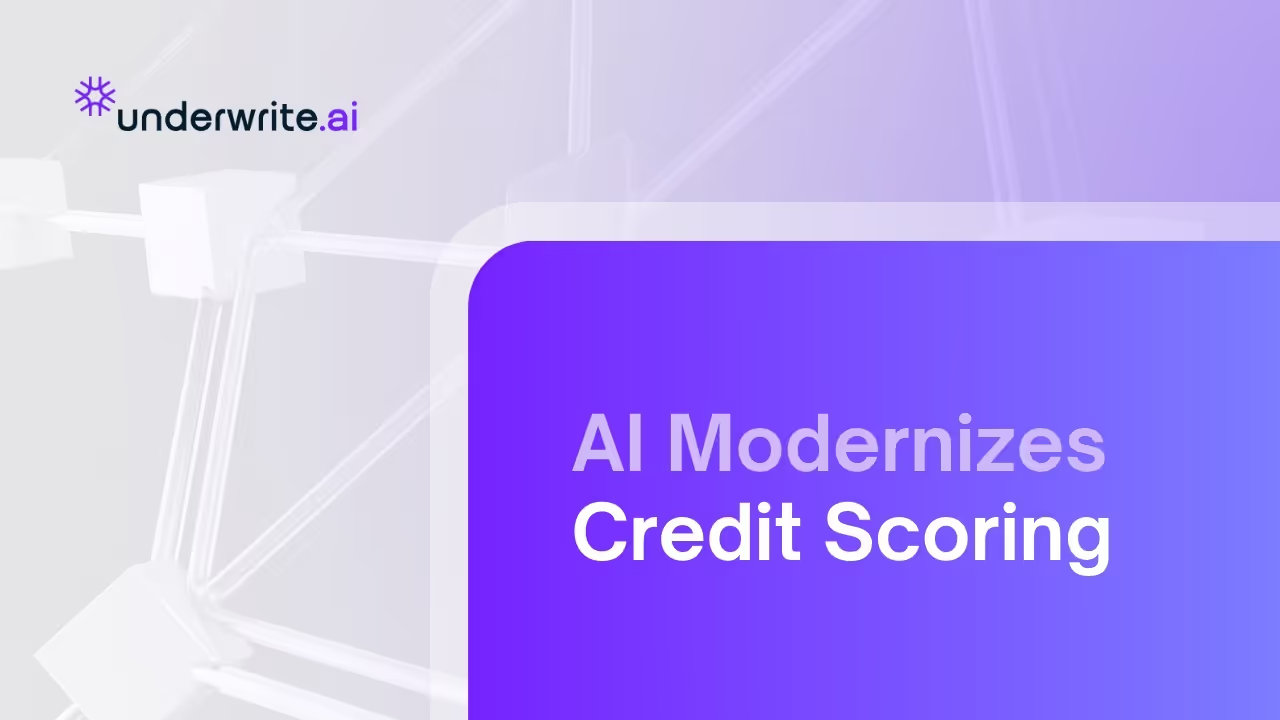Beyond the Buzz: Understanding AI in Lending Services

The explosion of generative AI in the last few years has brought artificial intelligence into the spotlight. Tools such as ChatGPT are now household names, driving a wave of curiosity and excitement. But while generative AI may be new to many, AI has been transforming industries for over a decade—lending is no exception. Underwrite.ai's decade-long evolution exemplifies how AI has been transforming the financial sector for years.
Due to its popularity, people often think of large language models (LLMs) and generative AI when they think about artificial intelligence. While these models are powerful, they are not the only form of AI, and they come with significant limitations in regulated industries like lending. In this space, privacy, fairness, and consistency are paramount, and not all AI technologies are created equal.
Early adoption and benefits of AI in financial services
AI's influence in lending predates the recent AI boom. For years, lenders and other financial professionals have been leveraging the benefits of AI for things like fraud detection, dynamic pricing, and even portfolio management. AI offers essential benefits in efficiency and objectivity, presenting new opportunities for lenders to scale their business and spend more time with their customers.
Over the years, many of these machine learning models began to outperform traditional methods by analyzing large datasets to find patterns that human analysts could not detect. But even as these tools have improved, the need for strict regulation has remained, forcing developers to balance innovation with compliance.
Demystifying AI: What types of AI are best for lending and credit modeling
The different types of AI available today serve different functions, and it's important to understand their distinctions. LLMs like ChatGPT and Claude are tremendously useful tools but have some notable problems in regulated industries like lending.
The core problem is that these models are not idempotent. Idempotent is a fancy mathematical term for a simple idea. If you ask the same question five times, you should get the same answer all five times. If asking a question always returns the same answer, the model is idempotent.
Both models share the strength of processing and analyzing large volumes of data. Statistical models follow a defined set of rules. Generative AI and LLMs are built to be a bit more creative than that. They will answer the same question in many different ways - sometimes, even incorrectly.
In lending use, applications must all be handled consistently. The decision to approve or deny a loan must always be fully repeatable.
At underwrite.ai, we use rigorous statistical models that are idempotent to determine the risk of an application. Once a decision is made and an explanation determined, we can then use LLMs to better convey it in a human-readable form.
Within statistical models, we can further differentiate between linear and nonlinear models.
Linear models are based on the assumption that relationships between variables are straightforward and proportional. For example, in a credit scoring model, if an applicant's income increases, their creditworthiness might also increase in a predictable, linear fashion. These models are simpler, faster to compute, and often easier to interpret. In many traditional financial services applications, linear models have been the go-to choice due to their transparency and ease of explanation.
Nonlinear models, like underwrite.ai, can analyze more complex relationships in the data. In the real world, factors influencing credit risk are rarely perfectly linear. For instance, an applicant's creditworthiness might depend not only on income and credit history but also on how income compares to the monthly payment amount, estimated life of the asset, insurance use, and thousands of other available data points. This gives us a more complete picture of a borrower's situation. Credit history can be a trailing indicator, and the circumstances for which someone may need credit can impact risk, even from application to application for the same person.
The future of AI in lending: A new view of creditworthiness
Credit risk modeling is a complicated and important issue. Access to credit can be life-changing for consumers and business owners. Getting more consumers to a "yes" is a win for borrowers and lenders.
For years, the flaws in traditional lending decisions have been evident, but linear models persist due to their history of reliability in specific populations. While this is still true, nonlinear models have given us concrete data on how underserved populations can offer profitable business opportunities. For example, our models have shown that up to 50% of thin-file consumers will, with correct underwriting, mirror the performance of prime borrowers with an overall default of 4%.
Here lies the primary benefit and opportunity to exponentially grow lending profitability with AI. Underwrite.ai models have consistently shown positive outcomes and low loss rates for our highest-tier applications. Most importantly, the highest-scoring tiers also represent the bulk of the volume of applications. This contrasts with models like FICO™ 9, which also have high-performance tiers but minimal volume.
In the first chart below, showing results from an underwrite.ai model, you can see the highest-scored applications, which resulted in 96.73% being paid back in full, 3.27% defaulting, and so on. The chart showing FICO™ 9 tiers shows that the positive outcomes start at 100%. However, when you overlay volume, you can see that this represents a very small portion of the applications. In contrast, the underwrite.ai model was able to accurately predict positive outcomes for the bulk of the application volume.


By widening our view of how to assess creditworthiness, we are enhancing predictive accuracy. This opens up new lending opportunities and increases profitability.
As AI continues to evolve in lending, fostering responsible innovation is crucial. Understanding the strengths and limitations of different AI models, particularly in the financial sector, is paramount. This ensures explainability and compliance.
This focus on transparency and responsible AI allows us to offer borrowers and lenders a more inclusive and efficient lending experience. As the future of lending unfolds, underwrite.ai is committed to staying at the forefront of AI innovation while ensuring responsible and compliant practices.
Explore our resources about the use of artificial intelligence in financial services
Start for Free Today
Get in touch to set up your custom model and experience underwrite.ai free of charge for 30 days.


.avif)
